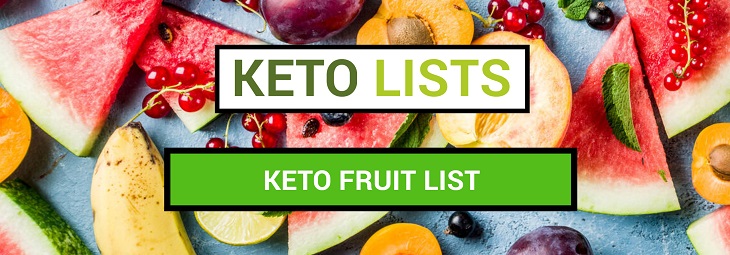
The keto diet’s main goal is to get your body into ketosis, so you’re burning fat for fuel instead of carbohydrates. This means that your intake of high-carb foods needs to be restricted.
Most people think you need to avoid eating fruit on a keto diet.
While it is true that several fruits are high in sugar and carbs, not all of them need to be eliminated.
Fruits are an excellent source of vitamins and minerals that can help you prevent nutritional deficiencies.
Some fruits are low in carbohydrates and high in fiber, which makes them an ideal option when following a ketogenic diet.
Here is the ultimate list of the best fruits for keto.
Yes, you can eat some types of fruit on a ketogenic diet, but others are too high in carbohydrates.
You need to know which kinds are low in carbs, and always be mindful of your serving size so you stay within your daily budget.
Let’s have a look at what fruits you can eat on keto.
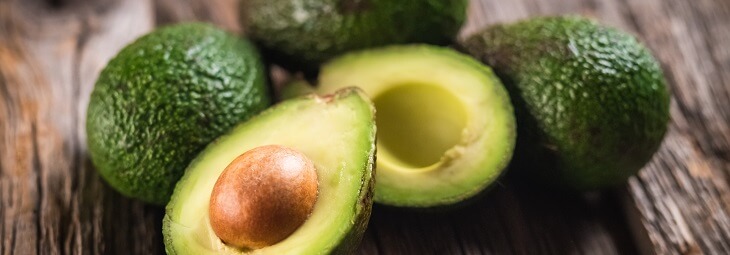
Did you know that avocados are a fruit?
They are a good natural source of vitamins and minerals such as vitamin K, folate, pantothenic acid, and potassium.
An added benefit is that they are an excellent source of healthy unsaturated fats that can help reduce heart disease risk (if they replace saturated fats in your diet).
A common mistake people make on a keto diet is not consuming enough fat. When you’re focused on decreasing carbs, it can be easy to forget that 70-80% of your calories need to come from fat.
Plant-based fats like those in avocados are healthier than animal fats.
Another benefit of avocados is that they are very low in carbs, thanks to their high fiber content.
In 100 g of avocados, you get:
Since avocados are high in fiber, they can help prevent or treat constipation, one of the main drawbacks often associated with a ketogenic diet.
There are several ways you can consume avocados:
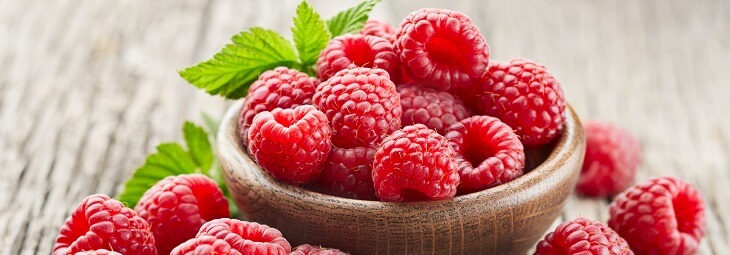
Raspberries are another great fruit to eat on a keto diet since they are low in calories and high in fiber.
In 100 g of raspberries, you get:
As you can see, raspberries are low in carbs, which makes them an ideal keto-friendly fruit option.
One of the benefits of raspberries is that they provide a high fiber content, which can help to keep you fuller for longer.
Another benefit of raspberries is that they are high in nutrients, such as manganese, vitamin C, and vitamin K.
Vitamin C is a powerful antioxidant that can help neutralize inflammation in your body. It also helps to boost your immune system.
There are several ways you can include raspberries into your ketogenic diet:
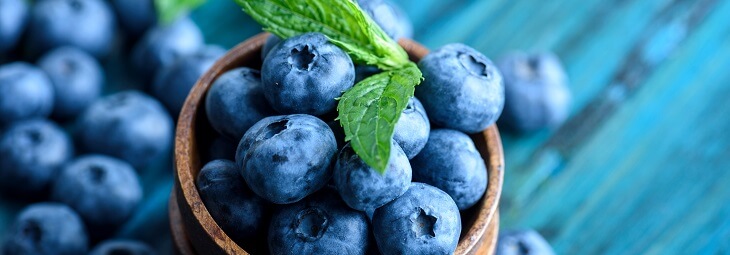
Blueberries are another great fruit to eat on keto.
Often called the king of antioxidants, they can help reduce inflammation, boost your immune system, and aid muscle recovery after exercise.
In 100 g of blueberries, you get:
While they are higher in carbohydrates compared to raspberries, they are still an excellent low-carb fruit. You do need to measure your portion to fit your macros.
Blueberries can also help you reach the recommended intake of fiber, which most people don’t get enough of.
Besides being high in antioxidants, they also contain other nutrients, such as vitamin C, vitamin K, and manganese.
Manganese is an essential nutrient since it acts like an antioxidant that helps reduce inflammation. A study also showed that manganese combined with calcium could help reduce PMS symptoms.
Here is a list of ways to eat this keto-friendly fruit:

Are you noticing a pattern? All types of berries are good fruits for a keto diet, and strawberries are not an exception. They are excellent keto fruit to add if you want some sweetness and flavor to your diet.
In 100 g of strawberries, you get:
Strawberries are not only high in fiber but also very high in water. This means that it gives you a lot of volume with little carbs and calories, making it an ideal food for those on a weight loss and keto journey.
They are also high in nutrients such as vitamin C, manganese, folate, and potassium.
Strawberries can also supply a good dose of potassium. This mineral is essential in the body since it helps regulate your heart rate and muscle contractions.
So, if you want to avoid muscle cramps, strawberries are a good addition to your diet.
There are several ways you can include strawberries into your keto diet plan:

Citric foods like lemons and limes should also be added to the keto fruits list.
They are an excellent source of vitamin C, but what are other health benefits you can get from lemons?
In 100 g of lemon juice, you get:
Lemon juice is very low in calories. Remember that the information above is for 100 g of lemon juice, which is more or less ½ a cup of lemon juice. That’s more than you would usually have in one serving.
If you have the juice of just one lemon, you’re probably getting around 3 g of net carbs.
Keep in mind that lemon juice does not have much fiber compared to other low-carb fruits on the list.
Besides being high in vitamin C, lemons are also high in potassium, folate, and vitamin B6.
So, how can you add lemon to your keto diet?
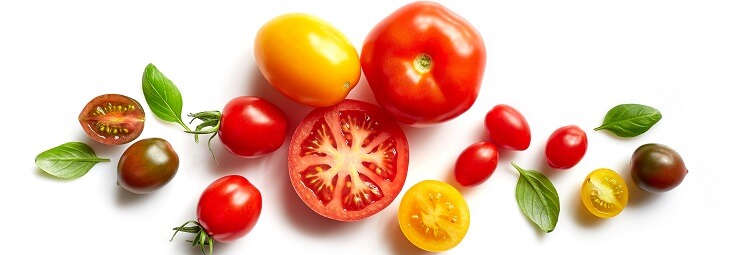
Finally, another low-carb fruit for keto is the tomato.
It may sound strange, but like avocados, tomatoes are considered a fruit.
In 100 g of tomatoes, you get:
Tomatoes are high in potassium, vitamin C, folate, and vitamin K.
Vitamin K is essential to help with blood clotting and bone health. If you are on anticoagulants, chat to your doctor about your vitamin K consumption to make sure you don’t go too high.
There are several ways you can include tomatoes into your keto diet:
The amount of fruit you can eat depends on your macros, or how much of each macronutrient you should eat each day to stay in ketosis. It also depends on the type of fruit.
Most people on keto eat less than 50g of net carbohydrates per day, so you can see how it’s possible to have this list of low-carb fruits:
The final determining factor for how much fruit to eat on keto is what other foods you eat during the day.
You need to save some carb allowance for other foods, especially vegetables.
If you control the portion size according to the carb count, you can include almost any food of your choice on a ketogenic diet.
However, some foods have so many carbohydrates that you would only be able to have a very small portion that it might not be worth it.
Here is a list of fruits to avoid on keto since they are higher in carbs and lower in fiber:
Dried fruits and fruit juice of all types should also be avoided
Some fruits are good for keto. However, you need to be careful with the types of fruits you eat.
Stick to the list of keto fruits that are lower in carbs and higher in fiber, and measure your serving size depending on the carb count.
You don’t want to use up your entire daily carbohydrate allowance on fruits. Plan your meals so that you can include a variety of fruits, vegetables, and other foods in your diet.
This way, you can increase your intake of different nutrients and maintain optimal health while following a ketogenic diet.
Mangoes, bananas, and pears are some fruits with high sugar content. While you could consume them on a ketogenic diet, the portion size would have to be so small that it’s probably best to avoid them so you don’t go above your carb limit.
Avocado, berries, tomato, and lemon are some of the fruits you can include on a ketogenic diet. These fruits are low in carbs and high in fiber which makes them the perfect option.
While apples are high in nutrients, they are also high in carbs, making them not a very keto-friendly option. Just half an apple would be difficult to include. If you really crave apples, you could have a few slices, for example as a salad topping.
Yes, avocados are considered a fruit and one of the best you can include on a ketogenic diet since they are low in carbs and high in fat. They are also a great source of fiber.